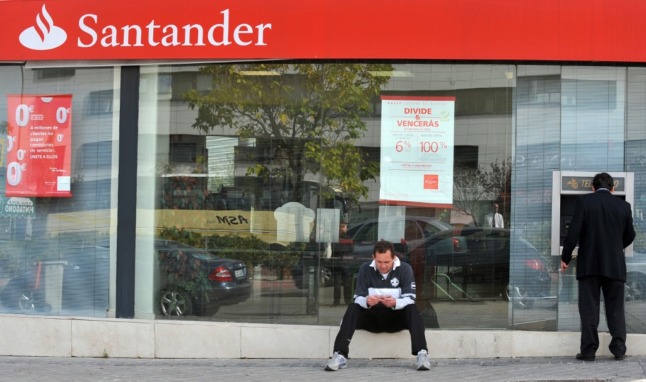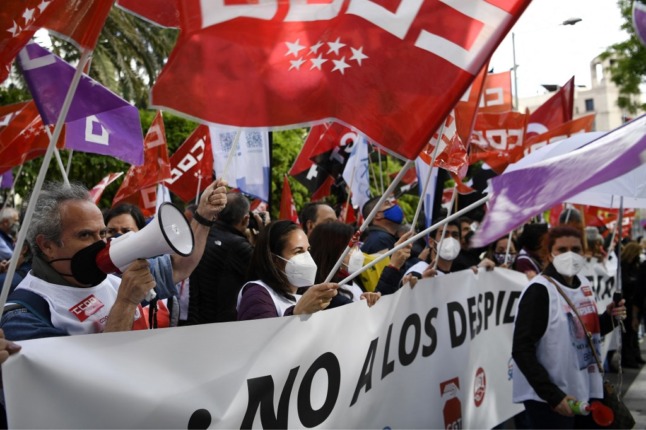We become so used to the traditions we ourselves were brought up in that other people’s parenting techniques can appear exotic, baffling and sometimes just downright bizarre.
Spanish baby girls all have their ears pierced

When I was a girl I had the tortuous wait until I reached the grand old age of twelve before my parents allowed me to pierce my ears. In Spain baby girls are adorned with ear studs before they even leave the hospital.
Those parents who choose not to violate the velvety soft lobes of their newborn daughters will be forever having to correct people on the true gender of their baby. Dressing head to toe pink just won’t be enough
There is no set bedtime for Spanish children
While northern European parents may be preoccupied with establishing a routine of bath, book and bed by 7pm so that they can enjoy some adult time or even call in a babysitter and enjoy a rare night now, such habits are not prevalent in Spanish society.
Children stay awake late into the night, joining their parents in restaurants long past 10pm and tearing round terrazas with other youngsters on warm summer nights while their parents enjoy a drink or dinner with their friends. It is not unusual to find young children curled up in a chair fast asleep in a noisy bar or restaurant.
Spanish children know how to swear like a trooper
Don’t be shocked to hear a Spanish child reel off a string of expletives or casually intersperse dialogue with ‘joder, mama!”
While the equivalent might have earned an English child the threat of “washing your mouth out with soap and water” in Spain it is just a reflection of how prevalent swearing is in everyday language and is not a sign of being badly brought up. And the upside is adults don’t have to modify the way the speak in front of the kids.
Children actually wear ‘Sunday best’ and not just on Sundays
The Spanish take ‘Sunday Best’ to a whole new level, decking their children out for lunch in a restaurant or a walk in the park in corduroy knickerbockers, sailor suits and pinafores in outfits that wouldn’t have looked out of place in Edwardian times. Siblings are often decked out in matching ensembles.
The tendency to overdress means that in winter, children will be wrapped up as if for a day on the ski-slopes even if it is 10C outside and even in the height of summer it’s a rare sight to see a Spanish child running around barefoot in the sand or on the grass.
Spanish children are allowed to play with fireworks
It seems to me that one of the greatest thrills of being a kid in Spain is setting off firecrackers in a town square to make unsuspecting guiris like me jump out of my skin. While in the UK, the dangerous job of setting up the fireworks for the annual Guy Fawkes night firework display fell to a man in protective clothing located far away behind a fence. In Spain the laissez faire attitude to pyrotechnics means it’s not unusual to see a rocket whizzing through the crowds at a summer festival.
Long summer holidays and extended stays with the grandparents

Photo: monkeybusiness/Depositphotos
With the school summer holidays stretching well beyond two months and the predominant situation of two working parents, Spanish children are frequently farmed off to the ‘pueblo’ to be looked after by the grandparents for at least a fortnight over the summer. Many spend several weeks at a summer camp at the start of the holidays before heading out of the cities and if they are lucky, to the seaside, to be spoilt by their grandparents. With great summer weather and free childcare and a chance for the older generation to spend quality time with the youngest it’s a win-win situation for the whole family.
Babies wear perfume

Photo: vitalinka/Depositphotos
For some baffling reason Spain is obsessed with baby perfume. An American friend living in Madrid who had a baby shower ahead of the birth of her first baby was quite startled to receive not one, not two, but three different brands of bottled baby perfume with which to douse her newborn.
Because what mother wouldn’t want to disguise that sweet freshly bathed newborn baby smell, right?
READ ALSO: Why I’ll never adopt Spanish bedtimes for my children






 Please whitelist us to continue reading.
Please whitelist us to continue reading.
Member comments